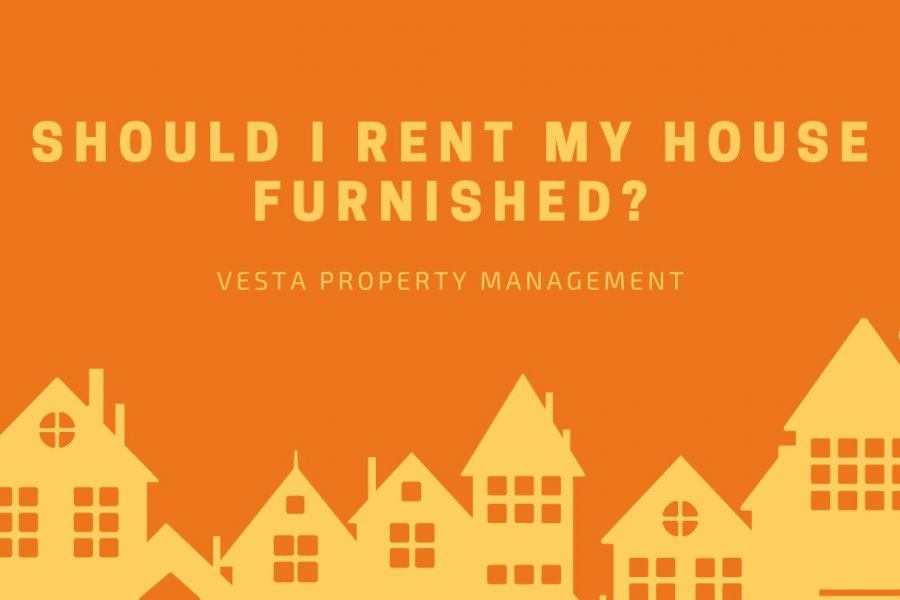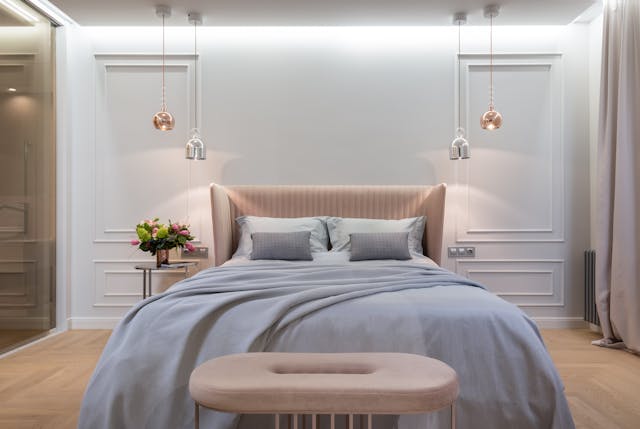
One of the most important decisions landlords face is whether to rent their house furnished or unfurnished. This decision has significant implications for the kind of tenants you attract, the rental income you can generate, and the level of responsibility you’ll take on as a property owner.
Determining whether to furnish your rental depends on multiple factors including the location of the property and the budget you’re willing to allocate for furnishings. By understanding the benefits, challenges, and key considerations of offering a furnished rental, landlords can make an informed decision that aligns with their financial goals and operational preferences.
Furnished Rental Unit
A furnished rental property includes essential furniture and appliances to meet the basic needs of tenants. These items typically cover areas for living, sleeping, and cooking, making the property move-in ready.
However, there is no universal standard defining what a furnished apartment must include. Landlords have the flexibility to decide how extensively they want to furnish the space, ranging from minimal essentials to fully equipped homes with premium features.
The level of furnishing you provide will largely depend on your audience and the rental price you aim to achieve. Understanding your market and tenant expectations is crucial in making this decision. Below we’ll discuss different areas of a home and the standard furnishings you should consider for them.
.jpg)
Kitchen
The kitchen is one of the most important spaces in any rental property. A furnished kitchen typically includes large appliances such as a stove, oven, and refrigerator. These are considered necessities by most tenants. Additional small kitchen appliances, such as a microwave, coffee maker, or toaster, are optional but can enhance the appeal of the property.
Including basic cookware, utensils, and dishware is another thoughtful touch. These items are especially useful for tenants who may be relocating from another city or country and prefer a turnkey living arrangement.
Living Room
The living room serves as the central gathering area in a home, and furnishing this space contributes significantly to a tenant’s comfort. Essential items for the living room include seating options like a sofa, chairs, and ottomans.
Adding tables such as a coffee table and side tables can enhance functionality while providing adequate lighting with lamps or overhead fixtures completes the space.
Some landlords choose to add decorative elements, like rugs or wall art, to create a more inviting atmosphere. While these are optional, they can make the property more appealing to tenants seeking a home-like environment.
Bedroom
A furnished bedroom should include a bed with a quality mattress, storage options like a dresser or closet space, and a nightstand. These basic items are essential for ensuring tenant comfort. Providing bedding essentials, such as sheets, blankets, and pillows, can further enhance the tenant’s experience and add to the convenience of moving into the property.

Landlords seeking to attract higher-paying tenants may also consider adding extras like blackout curtains, bedside lamps, or even a small desk for tenants who work from home.
Bathroom
The bathroom should be equipped with necessities to ensure functionality. Decorating the bathroom with items such as a shower curtain, bath mat, and wastebasket are small but essential details that contribute to the tenant’s overall experience. Landlords may also consider adding a starter set of toiletries or extra towels to enhance the tenant’s convenience.
Advantages of Offering a Furnished Rental
Potential for Higher Rental Income
Furnished units typically command higher rent compared to unfurnished ones. Tenants value the convenience and cost savings of not having to purchase furniture, which makes them willing to pay more for a fully equipped space. This additional income can offset the initial costs of furnishing and maintaining the property, making it a potentially profitable decision for landlords.
Shorter Vacancy Periods
A move-in-ready property can significantly reduce vacancy periods. Tenants in need of immediate housing solutions are more likely to choose a furnished rental over an unfurnished one.
This is particularly true in markets with high demand for temporary accommodations, such as areas near universities, business districts, or hospitals. By minimizing downtime between tenants, landlords can ensure a more consistent rental income stream.
Challenges of Offering a Furnished Rental
Initial Investment Costs
Outfitting a rental property involves a considerable initial expense. Purchasing quality furniture and appliances can be expensive, especially if you aim to offer durable and visually appealing items. The cost of furnishing can vary widely depending on the level of quality and the number of items you choose to include.

It’s essential to consider the long-term value of your investment. High-quality furnishings may cost more initially but can save money over time by reducing the need for frequent replacements or repairs.
Maintenance and Replacement
Furnished rentals come with the added responsibility of maintaining and replacing items as needed. Over time, furniture and appliances will experience wear and tear. Landlords must be prepared to address issues promptly to maintain the property’s appeal and functionality. This ongoing maintenance can add to the overall cost of managing a furnished rental.
Including durable furniture and setting clear expectations with tenants regarding care and usage can help mitigate these challenges. Regular inspections and a well-structured lease agreement are also essential for managing maintenance responsibilities effectively.
Bottom Line
Renting your house furnished offers a range of benefits and challenges that landlords must carefully evaluate. By providing essential furnishings, landlords can attract a wider tenant pool, command higher rent, and reduce vacancy periods. However, the initial investment and ongoing maintenance require thoughtful planning and management.
If you’re unsure about how to navigate these challenges or want to maximize the potential of your rental property, Vesta Property Management can help. With extensive expertise in managing both furnished and unfurnished properties, we offer tailored guidance to meet your unique needs.
Contact Vesta Property Management today to learn more about how we can assist you in optimizing your rental property. Let us help you make informed decisions, minimize stress, and maximize your investment’s potential.